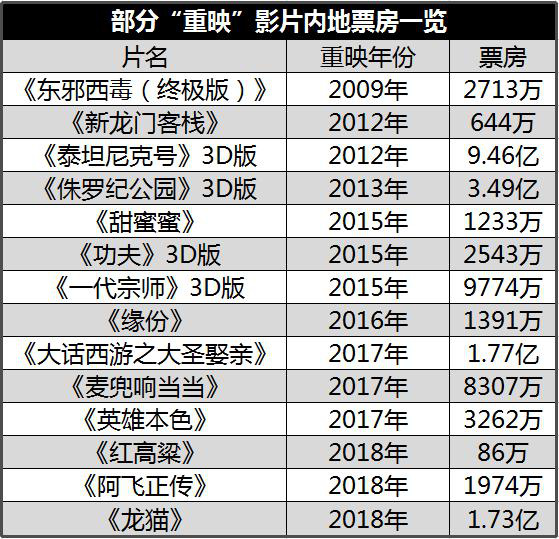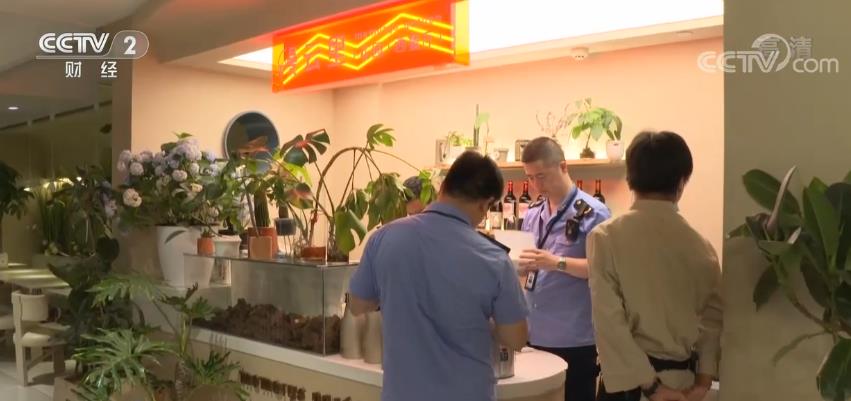Mayor Geng Yanbo recently replied to 54 relocation and resettlement issues!
Recently, Mayor Geng’s message board of People’s Daily Online gave a centralized reply to all kinds of questions about relocation and resettlement, with as many as 54 related questions.

The transformation of shanty towns and villages in the city, which are very important in Taiyuan urban construction, is in full swing, and the problems of relocation and resettlement involved are endless. Resettlement funds and transition fees are not in place; The relocated house has been waiting for many years and still has not landed; Whether the resettlement house can be loaned … Many citizens are worried about the relocation and resettlement of their homes day and night in rented houses.
1. Taiyuan seven bungalows shanty towns to transform the relocation of housing problems.
User message:
Hello, the renovation of seven bungalows in three buildings, No.6, No.7 and No.8 in Area C, started in 2014. Now it is mid-July, 2018, and it is still not capped. It has been built for almost five years, and it is not easy for ordinary people to buy a house. I want to know when I can hand over the house and when I can return to work. Please ask the mayor to make decisions for our people.
Official reply:
Verified by the jiancaoping district Municipal Government, at present, 16 buildings have been started in the renovation project of seven bungalows and shanty towns, of which 9 buildings have been capped and 7 buildings are under construction. After understanding with the construction enterprises, the capped building is expected to have turnkey conditions by the end of 2018, and the three buildings in Area C, No.6, No.7 and No.8, are expected to be completed in 2018-2019.
2. The relocation of relocated households in North Central.
User message:
In April, 2013, the relocated households in North Central were repaired, and now it has been more than five years, and the relocation building has been built. Now the transition fee has not been paid for 16 months. At that time, it was said that it would take about three years to move back. Now it has been more than five years, and the house has been built. Why not give it a house? Don’t give a transition fee? Please pay attention to the leaders in their busy schedules.
Official reply:
Verified by the jiancaoping district Municipal Government: As for the problem that you reflected about the relocated house, at present, Shanxi Procter & Gamble Company, the developer of Longwan freehand brushwork community, has coordinated with relevant departments, and is now perfecting the relevant procedures such as planning and land acquisition. Regarding your question about the transition fee, at present, the transition fee for the fifth year has been reported to the Municipal Construction Audit Center for review. After the formal review report is issued by the Municipal Construction Audit Center and reported to the municipal government for funding, the transition fee for the fifth year will be paid immediately.
3. The problem of relocated houses in Donggang Lane.
User message:
Hello, government leaders! I was a relocated household in Donggang Lane in August, 13, and actively cooperated during the demolition, ranking first. At that time, I promised to move back for three years, and the resettlement was confirmed once in November, 2017, saying that I was waiting for notice, and the transition fee was not paid again. I went to several places promised at that time, and I heard that I had already finished distributing the house, but I didn’t know it myself. I hope the leaders will give me an answer.
Official reply:
Verified by the yingze district Municipal Government, there is insufficient supply of relocated houses at present, and active planning is under way. Regarding the transition fee, the budget approval form has been reported to the relevant departments of the city, and will be issued after the municipal financial funds are in place.
4. The relocation of fu tung street Building Materials Factory.
User message:
The relocated house of fu tung street East Central Building Materials Factory said that it would be delivered at the end of June, but nothing has happened yet. When can it be delivered?
Official reply:
Verified by the Xinghualing District Government, the resettlement houses in shanty towns of the building materials factory have been basically completed, and the supporting work for the community is being done. After the delivery of Xinghualing District in the city, we will pay close attention to the preparatory work for housing distribution and strive for an early relocation.
5. The problem of moving back to yingze district Bingdong Primary School.
User message:
Hello, Mayor Geng: After the relocation in 2012, demolition in 2013, long-term waiting in 2013-2016 and unremitting efforts in 2016-2017, Bingdong Primary School finally ushered in the hope of moving back. The relevant government departments promised to complete the construction of Dongdong Primary School by the end of 2017 and move back on September 1, 2018. We are waiting for the arrival of September 1st with great expectation, hoping that the children will finally have a spacious, bright and clean study and living environment. However, at the beginning of July, there was bad news: malicious arrears of wages, suspension of renovation works, and hopes of moving back were dashed. Mayor Geng, please arrange and coordinate with relevant departments. Can you solve relevant problems as soon as possible, move back as scheduled, and honor your promise? First of all, I would like to express my high respect and gratitude to you for doing practical things for the citizens!
Official reply:
Verified by the yingze district Municipal Government, the new residential area of Bingdong Primary School is under construction in the middle section of Donggang Road, and now it is under normal construction. The yingze district Education Bureau will try its best to urge it to be completed as soon as possible and strive to move back as soon as possible.
6. Loans for relocated houses in shanty towns of building materials factories.
User message:
Hello, Mayor Geng. I am a relocated household in the shanty town of building materials factory in Xinghualing District, Taiyuan City, and the relocated building is Donglai Longcheng Garden. I would like to ask you, can a relocated household like us give a loan when buying Donglai Longcheng Garden? If you can get a loan, what are the procedures? I hope the leader can give a reply in spite of his busy schedule. Thank you very much.
Official reply:
Verified by Xinghualing District Government: At present, the building materials factory has not been delivered for use, and the relocation and resettlement work will be started when it is delivered for use. After the expropriated person selects the housing number and completes the resettlement procedures, only if the expropriated person has a provident fund account and pays the provident fund normally can he go through the provident fund loan procedures; If the expropriated person does not have a provident fund account, banks do not support commercial loans for relocated households.
7. The problem of resettlement funds in wulongkou area.
User message:
Hello, Mayor Geng, I am a resident of wulongkou District. My house said that it will be moved back for three years, but it is hopeless now. We rented a house outside, and we haven’t paid the wedding resettlement money for almost a year! We are also ordinary people! I really can’t afford it! We belong to the Confucian temple community! Ask Mayor Geng to help us! There’s nothing we can do!
Official reply:
Verified by yingze district Municipal Government, the relocation site of wulongkou area is near No.14 Middle School, belonging to Xinghualing District. At present, the demolition work in Xinghualing District is not over yet, and the relocation work is arranged by the municipal government. The budget table of the transition fee is under examination and approval, and will be released in time after the funds are allocated in place.
8. The resettlement of shanty towns in newly-built lanes.
User message:
Hello, Mayor Geng, it has been more than five years since the shantytown of Xinjian Lane in Xinghualing District was demolished and rebuilt in 2013. The demolition is far away and the house has not yet started. I hope you can pay attention to this matter in your busy schedule!
Official reply:
Verified by the Xinghualing District Government: due to planning restrictions, although the land has been demolished, it has been unable to start construction, and the Xinghualing District Government is considering the resettlement of the relocated households of the project as a whole.
9. The problem of relocated houses in shanty towns of Qingnian Road East Street South Lane.
User message:
Hello, Mayor Geng! I’m really sorry to disturb you in your busy schedule. We are residents of the shantytown reconstruction area of Qingnian Road East Street South Lane, yingze district, Taiyuan City. In 2013, in response to the government’s call for urban renewal, we moved out of the house where we had lived for 30 years. At that time, the agreement was: move back to the original site in three years! It is the fifth year now. Some time ago, we finally looked forward to the news of housing distribution, and finally we could end the wandering days of renting a house outside, return to a familiar environment and live in a spacious new house. We were overjoyed! However, outside the housing selection office area, we heard a news that hundreds of households in the reconstruction project of Nanshahe Expressway were also resettled in our Qingnian Road area (Yumin Longchengyuan), and the order of housing selection was in the forefront. Our hearts suddenly cooled by half. Why? Why haven’t the aborigines here been resettled yet, and priority should be given to resettling residents in other places? Moreover, from May 3rd, the house selection work suddenly stopped (the notice said it was to be audited), and it has been more than a month since then, and the house selection has not started. Recently (June 19), I read a notice in the newspaper that the residents of the reconstruction project of Nanshahe Expressway will come to our Youth Road (Yumin Longchengyuan) to choose a house again. We don’t understand. If the houses in Qingnian Road area are still well-off, we can accommodate residents in other places. But the fact is that the existing houses built in Qingnian Road area and the auction houses are not enough to accommodate the original residents. If we resettle residents in other places, where can our original residents go? Mayor Geng, please pay attention to us. We have been wandering outside for five years.When can I go back to my old place where I have lived for decades? Does the agreement signed by the government for us to move back to the original place still count? Please give us an explanation!
Official reply:
Verified by the yingze district Municipal Government, the original residents in the shanty town of Qingnian East Street and South Lane moved back to the original site, and the relocation place was Yumin Longchengyuan. The house selection order was strictly in accordance with the order of the demolition agreement number. For households with one room and multiple households, the original households will move back to the original site, and the rest will buy houses at the cost price, and the resettlement needs to wait for unified arrangements.
10. The issue of transition fee in wulongkou No.28 shantytown.
User message:
Hello, I am a resident of wulongkou No.38 Hospital shantytown renovation. I haven’t paid the transition fee for several months. When can I pay the transition fee?
Official reply:
After verification by the yingze district Municipal Government, the transition fee is under examination and approval, and will be paid in time when the funds are allocated in place. Please understand.
11. The issue of demolition and resettlement housing for Nanshahe Expressway in Qingnian Road
User message:
When and where can the relocation and resettlement houses of Nanshahe Expressway be divided? It has been four years, and I look forward to your reply.
Official reply:
Upon verification by the yingze district Municipal Government, according to the relocation and resettlement announcement of Nanshahe Expressway Reconstruction Project, the relocation location is Wang Jiacun, and the house selection time is from June 23rd to July 23rd, 2018 (8: 30-12: 00 am and 2: 30-5: 00 pm). The telephone number is 0351-4048810, and the house selection location is Yu, Qingdongnan Lane, yingze district, Taiyuan City.
12. The problem of resettlement housing in Haojiagou Village
User message:
Haojiagou village has been demolished for a year and a half, and has not received any news about the resettlement house. At the time of demolition, it was promised to relocate for three years, but now more than half of the time has passed without any progress. Excuse me, has the planning scheme for resettlement housing been introduced? Does the eastward extension of Yingze Street have an impact on the resettlement housing planning?
Official reply:
Upon verification by the yingze district Municipal Government, the planning scheme of resettlement houses was formulated in accordance with the December 2016 "Reconstruction of Villages in Cities" and "Compensation Agreement for Demolition and Resettlement of the Whole Village". At present, the work of clearing, correcting and making up the difference in Haojiagou Village has not been completed, and the developer has not yet settled in. The village committee has submitted a compensation report for the relocated resettlement houses to the Haozhuang Town Government. This project was taken over by Taiyuan Longcheng Investment Real Estate Co., Ltd.
13. Shanyou Lane relocation house problem
User message:
Hello, Mayor Geng, the house relocation that the old people in the family have been waiting for for a long time has finally got the latest development some time ago. The whole family is very happy, that is, the square meters will be rewarded for the demolition. Because the conditions at home are limited at present, there is no suitable area for the relocated house to enjoy the number of square meters under the existing economic conditions. Although the house is smaller, it will soon be relocated, and the family is very happy, but this situation is somewhat regrettable. At the same time, the square meters rewarded for the demolition cannot be carried out by other means. Personally, I think that although the reward is not the decisive factor for the conclusion of the demolition agreement, it is still a necessary condition or the reason for us to reach the demolition agreement with greater confidence, so I would like to ask, in this case, is it really such a unified approach? thank you
Official reply:
Upon verification by the yingze district Municipal Government, if private residential houses are expropriated, each household can donate 15 square meters for free on the basis of the original construction area. After giving 15 square meters, the part less than 55 square meters will be paid according to the subsidy price of 1000 yuan/square meter; More than 55 square meters and less than 70 square meters, according to the preferential price of 2000 yuan/square meter to pay. If the expropriated person requests to increase the resettlement area again, the increased part shall be paid according to the market price, and other documents cannot be converted, and the policies are unified.
14. The problem of resettlement housing in Xingping Village, Yaocun Town
User message:
Hello, Mayor Geng, I am a villager in Xingping Village, Yaocun Town, Jinyuan District, Taiyuan City. Many years ago, my village was recognized as a mining area reconstruction, and buildings were allocated to the villagers. Excuse me, where is the reconstructed building, when can it be distributed to the villagers, and how is it allocated?
Official reply:
Verified by the Jinyuan District Government, the relocated new building is located in Wufuying Village, Jinyuan District, opposite to the New Children’s Hospital. At present, the construction of the new building is basically completed. How to allocate it should be implemented only after Jinyuan District has issued a specific allocation plan.
15. The problem of moving back to the 205 community of Senyuan South Street, Datong Road.
User message:
I am a relocated household in 205 Community, Senyuan South Street, Datong Road. In May 2013, our building was demolished due to the construction of the North Central Road by the municipal government. According to the contract, it moved back in May 2016, but now it has been overdue for two years and it has not been moved back. Moving back to Longwan freehand brushwork building 13 and building 1, this building was capped in June 2016, and it was said that it would be moved back soon from September and October 2017, but for some reason, we have not been allocated a room yet, and we are still renting a house outside, and the transition fee has been suspended for one year, and the liquidated damages for two years have not been paid at all. In the meantime, we also went to the Gucheng Sub-district Office, the jiancaoping district Municipal Government and the Municipal Government for inquiries many times, but so far we have failed. We once again implore the relevant leaders of the municipal government to come forward to solve the resettlement of more than 400 households and give us a specific time for relocation. I hope that the parents of ordinary people will be people-oriented, be anxious about the urgency of the masses, solve the difficulties of the masses, let more than 400 households move back as soon as possible, and end the suffering of renting houses as soon as possible.
Official reply:
It has been verified by the jiancaoping district Municipal Government: regarding your question about the transition fee, at present, the headquarters of key projects in jiancaoping district is communicating and coordinating with the city construction audit center, and the remaining transition fee will be paid immediately after the city construction audit center allocates funds. Regarding the problem that you have not allocated housing, at present, the resettlement house has been completed and is now waiting for acceptance. Handle the housing distribution as soon as possible after the acceptance is completed.
16. The resettlement housing problem in Changxiang Village, Jinci Town
User message:
Dear Mayor Geng, I am an ordinary citizen in Changxiang Village, Jinci, Jinyuan District. In 2007, I started to demolish a part of it, and now it has been more than 10 years. This year, the west central area is extended to the south, and our village is demolished. I would like to ask if our village can demolish the whole village. I still don’t know where the resettlement house will be built, and how long it will take us to deliver the house. I hope the mayor can be busy to uphold justice for the people in Changxiang Village. All the villagers in Changxiang Village are very grateful!
Official reply:
Verified by Jinyuan District Government: At present, the method of the whole village demolition in Changxiang Village has not been determined.
17. The resettlement housing problem in Qinglong Town
User message:
Hello, Mayor Geng, my brother and I each got a house in the demolition of Qinglong Town. My brother’s house is an existing house, and mine is an auction house for two years. Now the house has not come down after two years, and the liquidated damages mentioned in the contract have not been compensated. I don’t have a fixed residence yet, and so do villagers like me. I hope that Mayor Geng can help the villagers who didn’t get the house in Qinglong Town to solve this practical problem. Thank you.
Official reply:
Verified by Yangqu county government, the protection and renovation project of Qinglong ancient town is one of the key projects implemented at the city and county levels in recent years. In order to broaden the framework of the scenic spot, the whole village was relocated in Qinglong Village in 2016. During the relocation process, due to the insufficient reserves of the relocated houses, some villagers made an agreement in the agreement to move back two years later (double the transition fee if they could not move back). The relocated house was built by Longcheng Development Investment Co., Ltd., and construction has started at present, and it is expected to be completed next year. The relocation transition fee for the relocated households has been paid by Houcun Township Government after applying to Longcheng Development Investment Co., Ltd., and there has been no default so far. The situation that the liquidated damages are not compensated as mentioned in your message does not exist.
18. The problem of relocated houses in the east section of Nanshahe Bridge
User message:
Dear Mayor Geng, it has been five years since the rapid renovation of the Nanshahe River in Taiyuan. At that time, it was promised to move back for three years, but there is no accurate information so far. In five years, the whole family is looking forward to having a stable home, and the monthly resettlement fee can’t maintain the rent for a family of six. It is difficult to bear the house price increase caused by five years. When can the dear Mayor Geng move back? How can the problem of buying a house brought about by demolition be reasonably settled? Can we hold a hearing on the residents in our district? thank you
Official reply:
Verified by the yingze district Municipal Government: Nanshahe involves several street offices, and verified with you that your original house is located in the east section of Nanshahe Bridge. Upon verification with Qiaodong Sub-district Office, Nanshahe Expressway was rebuilt and demolished in 2014. At present, the resettlement plan for Qiaodong area has been submitted to yingze district Municipal Government for approval. At present, the shortage of housing can’t satisfy all the relocated households. If you need to relocate urgently, you can apply to the housing distribution office (the 4th floor office of Qiaodong Street Office) to choose "Longcheng Xinyuan" and "Xuefuyuan" to relocate first, or you can wait for the housing to be sufficient.
19. Happiness Lane resettlement housing problem
User message:
Dear Mayor Geng: Hello, we are residents of Happiness Lane. In 2013, in response to the government’s call for road construction, all our households moved out early. At that time, the demolition told us to move early and move back early, and put us in the civil administration park, which is now Longcheng Xinyuan. Mayor Geng, you made the final decision yourself, which was confirmed by the yingze district municipal government. But now four and a half years later, we still don’t have a home of our own. We are residents of Area D, and we chose a house last year. We still can’t hand in the key this June. Our children are old enough to get married and have a wife. Now we don’t have a home for them. There is nothing we can do. The children are still waiting for this house to get married this year. I hope the mayor can help us. Why don’t we hand in the key to the residents of Area D now? We are looking forward to Mayor Geng’s busy schedule. thank you
Official reply:
Verified by the yingze district Municipal Government: At present, the housing allocation procedures are being handled in batches.
20. Consultation on safety index of resettlement houses in Nanyan Village
User message:
Dear Mayor Geng: Hello, I said earlier that the resettlement house in Nanyan Village has started construction, but since 2013, five buildings built by Kaizun Real Estate Company have been in the shutdown stage, and the heavy rain in 2015 has kept the construction site in the water, and the top steel bars of these buildings are exposed, which are rusty due to wind and sun. The people really think that this resettlement house will have the safety of life and property. I hope that the mayor can understand the sufferings and voices of the people in Nanyan Village, and come to the grassroots to understand the situation and see if the resettlement house of the people is suitable for living. I hope that Mayor Geng will find out clearly.
Official reply:
Verified by Jinyuan District Government, Nanyan Village has signed 581 property rights abandonment agreements since the construction of Zhonghuan Road in 2013 and the renovation of urban villages in October 2016, and the demolition of Nanyan Village is basically completed. You are one of them. The relocation of Nanyan village and the reform of collective economy have been completed, the demolition and table clearing work has been completed, the control plan has been approved, and the procedures for transferring and listing land for urban conversion are being processed. Construction of resettlement housing: Nanyan Village Committee has signed five-party agreements with Shanxi Contemporary Honghua Real Estate Co., Ltd., Shanxi Kaizun Real Estate Development Co., Ltd., Shanxi Xinnanyan Longteng Trading Co., Ltd. and Yijing Sub-district Office. Villagers resettle houses: the resettlement housing area is 250,000 square meters. At present, the construction of 11 resettlement houses is planned, and five buildings have been started. Building 1 is planned to build 11 floors, which has been capped. Building 2 is planned to have 12 floors, and 8 floors have been built. Building No.3 is planned to build 23 floors, and 20 floors have been built, which will soon be capped. Building No.6 is planned to build 30 floors, and now 4 floors have been built. Building No.8 is planned to build 30 floors, and piling has been completed. At present, the leaders in charge of Jinyuan District Government, Yijing Sub-district Office and Nanyan Village Committee have held coordination meetings for many times, and actively coordinated Shanxi Contemporary Honghua Real Estate Co., Ltd. and Shanxi Kaizun Real Estate Development Co., Ltd. to revise the supplementary agreement on urban reform through repeated consultations. Due to the contradiction between the two companies, Shanxi Kaizun Real Estate Development Co., Ltd. was persuaded to retreat through coordination. The Street Office will continue to do a good job in coordination, strive to sign a supplementary agreement as soon as possible, realize the resumption of construction of villagers’ resettlement houses, and strive to deliver the first batch of resettlement houses in June 2019.When returning to work, quality supervision, safety supervision and other relevant departments will check in advance whether there are quality and safety problems before construction.
21. The transition fee for resettlement in Geliaogou and the problem of resettlement houses.
User message:
Hello, mayor, is it necessary to demolish the village in Geliaogou if all the expenses and resettlement are not in place?
Official reply:
Verified by Wanbailin District Government, Geliaogou Village is accounting for the demolition compensation while collecting the agreement, and the demolition compensation is being distributed in batches.
22. The allocation of resettlement houses in Xizhai Village
User message:
I am from Xizhai Village, Jinyuan District, Taiyuan City. The long-awaited resettlement houses in our village have begun to count the number of people, and they will be distributed in the near future. However, the bad thing is that we have to move the ancestral graves before we can give the keys to the housing distribution. The common people are a pragmatic group. At the beginning, it was promised to move back in two years, and this wait was five years. And the excess transition fee can’t keep up, not to mention the resettlement houses are so slow, let alone the relocated houses. The villagers want to respond to this situation like you through this platform. They all say that Mayor Geng considers doing practical things for the people and has a good reputation! In fact, we also want to see some real things. We don’t want the local village Committee to fool us, but our eyes can see clearly. We are not demanding. Give us what should be given to us, so as to truly make communist party serve the people, instead of threatening the villagers in disguise. What do you mean, don’t move the ancestral graves and don’t give us the keys? Isn’t this intensifying contradictions? This village Committee is not in the way of dealing with problems to solve! If the local village committee wants to solve the problem, it should be pragmatic first, and really consider for the people, instead of threatening us for the developers. I hope you can pay attention to it, thank you!
Official reply:
Verified by Jinyuan District Government, the first batch of housing allocation scheme for resettlement houses in Xizhai Village has been drafted, and now it has entered the stage of soliciting opinions through thorough investigation. Because the graves of individual villagers in Xizhai Village are located in the designated land for urban conversion, the untimely relocation of graves has seriously affected the improvement of the city. In view of this matter, it is mentioned in the draft of Xizhai village housing distribution that villagers who fail to move their graves in time can choose their own satisfactory floor room numbers according to the demolition order of the urban reform and demolition villages, and only after the graves are moved can they allocate building keys. This plan is only a draft, and it can only be implemented after soliciting villagers’ opinions and finalizing the procedure of "four discussions and two publicity".
23. The problem of resettlement housing in Dunhuafang office
User message:
We are residents of Dunhuafang Office in Xinghualing District. In 2013, we demolished our house by repairing North Central Road. At that time, the government promised that we would move back three years later, and the first to move back first. The resettlement site was Jindong District, which is now Guoyue Longcheng Community. But now, five years have passed, and the reason why we can’t move back is that there are few houses in the city, the proportion of the designed apartment area is out of line with the intended area of the residents, and the Xinghualing District Government has not made a housing allocation plan according to the specific situation, and has not made a housing allocation plan according to the promise of "moving first and moving back first", thus causing a large number of early-relocated households to move back instead of moving back, which is contrary to the government’s commitment at that time. The first and second phases of the house in Guojie Longcheng Community were successively divided in 2016 and 2017, and the third phase of the house has come down this year. According to the housing distribution staff of the district government housing distribution office, there is still a big gap in the house, and the resettlement house has not been settled in the later period. Therefore, the third phase of housing distribution is very critical, and the people (especially those who rent a house outside are relatively ahead) are very anxious and eagerly looking at the house. Therefore, on behalf of the people who are anxious about housing, I reflect this situation to the city leaders, and ask the city leaders to coordinate the Xinghualing District Government to revise the housing distribution plan in spite of their busy schedules. We should revise the housing distribution plan according to the principle of "moving first and moving back first", realize the government’s commitment to the people, improve the government’s dignity in the hearts of the people, and lay a good foundation for the government’s demolition work in the future, so that the people can be convinced.
Official reply:
Verified by Xinghualing District Government, it is understood that you are responsible for collecting Lian Renbin from the 2013 North Central Demolition Project by Dunhuafang Street Office, with the demolition number of 20130528, the original demolition building area of 40.20㎡ and the intention of 120㎡. There are only 198 sets of houses with a size of about 120㎡ provided by Zone A and Zone B of Longcheng Bay in Guoyue, but actually many houses are needed, involving 4 expropriation implementation units and 11 expropriation projects. In the process of relocation and resettlement, according to the relocation and resettlement plan, the expropriated people are classified according to their intentions, and the demolition number is from small to large. At present, the Xinghualing District Government is working on the resettlement of Area C of Longcheng Bay.
24. The problem of relocated houses in Taiyuan County, Ming Dynasty
User message:
Hello, Mayor Geng, when will the relocated house in Taiyuan County of Jinyuan Ming be delivered? At that time, it was said that the three-year relocation had been five years.
Official reply:
Verified by Jinyuan District Government: At present, the greening of resettlement housing residential buildings has been basically completed, and the supporting facilities have entered the final stage. The surrounding roads are under construction. Although the keys have not been issued, the transition fees have been paid. The compensation for villagers’ demolition clearly stipulates that after more than 30 months, it will increase by 20% on the original basis. Now the street office headquarters has been insisting on paying the villagers’ transition fees in accordance with the demolition agreement. Next, after Longcheng Investment Development Co., Ltd. delivers the house to Jinyuan District, a housing distribution plan will be introduced, and then the house will be delivered to the relocated households.
25. The problem of relocation and resettlement of the shantytown in Xiaodongmen.
User message:
I am a resident of the red building at the intersection of Jianshe Road, Xiaodongmen, Taiyuan. After the shack was demolished in 2014, I said that I would be resettled nearby for three years, but now there is no news. ? The compensation has not been received this year, and it is miserable for everyone to wander and rent a house. I hope the leader can pay attention to what to put there and when to move back. The person in charge of the office didn’t give a positive answer either. I beg the government to pay attention to it, even if it gives us an accurate news so that we can wait with peace of mind.
Official reply:
Verified by the Xinghualing District Government, the compensation for residents of the Red Building at the intersection of Jianshe Road, Xiaodongmen, Taiyuan has been paid in place, and residents can go to the bank to inquire. There is no relevant notice about when to move back.
26. The relocation house in Jinsheng Village, Jinsheng Town
User message:
Dear Mayor: I am a villager in Jinsheng Village, Jinsheng Town, Jinyuan District, Taiyuan City. Our village started in May 2017 to cooperate with the urban construction, and the whole village was demolished after the renovation of the village in the city. It has been one year now. When will our resettlement house be moved back? The villagers are looking forward to returning to their homes as soon as possible, especially the old people. Because in our old tradition, renting a house outside is to live on the eaves, and the villagers are not practical. During the year when the whole village was demolished, several old people died with regret that they could not return to their homes. How eager the villagers are to return to their homes as soon as possible.
Official reply:
It was verified by the Jinyuan District Government that the demolition of the whole village was started on May 21, 2017, and completed on August 31, 2017. The transition period shall be implemented according to the relocation time agreed in the demolition agreement signed between the village and the villagers. Up to now, the conversion land of the village city has been demarcated, and the planning conditions have been issued. The land used by a power plant, detergent factory and other state-owned enterprises within the conversion land of the city is being cleared. Now the key project of the city, West Central South Extension Project, has started. The relocation location of Jinsheng Town can only be determined with the overall planning of the city government for this area. At present, the two committees of Jinsheng Village are actively carrying out related work, and strive to start the construction of resettlement houses at an early date.
27. The problem of relocated houses in Qiaodong Street
User message:
Dear mayor, in 2013, I responded to the call for the demolition and renovation of shanty towns, and I chose a house in January 2018. Now it’s been half a year, how often can I get a house? It won’t be another year, will it? The old people at home are so old that they should die in the rented house? The house has been built, so give the key quickly! If we didn’t take the three-year relocation seriously, it’s almost five years now! At present, the resettlement fee is not given. Ordinary people have been renting in other people’s houses for so much money, and they pay 5000 yuan a year, but now they don’t give a cent. I hope to put people’s livelihood in the first place and honor the government’s promise!
Official reply:
Verified by the yingze district Municipal Government: the housing distribution plan in Qiaodong area has been reported, and it can only be distributed after instructions; The transition fee is being actively prepared.
28. The issue of the transition fee for the elegant residence of one party in the Twin Towers Scenic Area.
User message:
Dear Mayor Geng, hello! I am a relocated household in the elegant residence of the Twin Towers Scenic Area. The house demolished in mid-May last year, when can we get the excess fee this year? When can the resettlement house be divided?
Official reply:
When was the yingze district Municipal Government approved: One party moved back to Longcheng Xinyuan. At present, the main project of resettlement house has been completed, external wall insulation and windows have been installed, and other facilities are being completed; The budget approval form for the transition fee has been reported to the municipal government, and will be issued after the funds for approval are in place.
29. The renovation of Yinmahe shantytown, the cost of relocation, and the problem of inadequate housing.
User message:
Hello, I am a resident of Yinmahe, Xinghualing District, Taiyuan City. Last November, the shanty towns were rebuilt and demolished. At that time, we were only asked to sign an agreement, and we were not given a demolition and relocation permit. So far, we have not been given the agreed resettlement fee. Now we have no procedures to prove the demolition and relocation. Excuse me, when will the government issue us a relocation permit? Does the relocation and resettlement period of three years mean counting from the signing of the agreement or from the date of issuing the relocation permit? Please answer, thank you.
Official reply:
Verified by the Xinghualing District Government, Sanqiao Street Office strictly arranged the demolition work according to the requirements. The relevant procedures are being processed, and the calculation time is counted from the signing of the agreement.
30. The reconstruction of Beishahe Expressway involves the transition cost and resettlement of demolition.
User message:
Hello, Mayor Geng, I am a relocated household in the reconstruction of Beishahe Expressway last year. The excessive expenses that should have been paid in March this year have not been paid since May 27th. . The workers’ new village street office said that it had been submitted in March and had not been approved. In April, the street office said that it would be transferred to Jinshang Bank for you. Deposits are being processed, with a limit of 100 per day. . In May, I asked the street office again, and the street office said that it would not change the bank for you or send it to Bohai. It has nothing to do with them. It has been handed over to the Housing and Construction Bureau! Ask the Housing and Construction Bureau that the bank has not reviewed the list well! Anyway, it’s been almost three months because of various excuses and reasons. Is it so troublesome to send a transition fee? There is also a three-year resettlement agreement written in the house demolition agreement. At that time, we chose the shanty town of the light industrial warehouse. Now more than one year has passed, and the demolition of the light industrial warehouse has not been completed. Can it be resettled in three years? We all cooperate with the government to carry out construction and demolition, but now the transition fee is not paid and the house is not built.
Official reply:
Verified by the Xinghualing District Government, the relocation and resettlement of the relocated households and the payment of the transition fee need to be approved by the Xinghualing District Housing and Construction Bureau before the transition fee can be paid to the bank card of the relocated households. Because the project is a service project purchased by the government, CDB only allocates the transition fee for half a year. After the project funds are adjusted, it will allocate the transition fee that should be paid. It is expected that the transition fee will be in place in September this year, and the Xinghualing District Government will pay the urgently needed funds first. The reconstruction project of Beishahe Road belongs to municipal engineering and needs the coordination of municipal departments. Whether it can be resettled normally after three years depends on the overall planning of the municipal department.
31. The problem of resettlement housing in shantytowns in eastern Shanxi.
User message:
Hello, Mayor Geng, I am a relocated household who was demolished in Yangjiayu Street in June 2013. At that time, the relocation intention was 100 square meters, and the relocation location was Guojie Longcheng Community, a shantytown renovation project in Jindong. Now Guojie Longcheng Community has completed the second phase of relocation and resettlement, and there are no houses of 100 square meters. Recently, the relocation and resettlement work of Guojie Longcheng began in the third phase, and there is no 100 square meters. Now I can’t see the hope of moving back, and my heart is very lost and nervous. I hope Mayor Geng will pay attention to this matter after his busy schedule. How many years will it take for us relocated households to move back?
Official reply:
Verified by the letter from Xinghualing District Government, the relocation and resettlement of Guojie Longcheng Bay involves the expropriated persons of Yangjiayu Street Office, Dunhuafang Street Office, Jianhe Street Office and Zhongjianhe Township People’s Government. The housing in Zone A and Zone B provided by Guojie Longcheng Bay can’t meet the quantity demand of resettlement, and there is also a serious mismatch between resettlement and resettlement. In 2018, the Municipal Housing Management Bureau once again allocated the housing in Area C of Guojie Longchengwan to Xinghualing District for relocation, but there is still a very large housing gap. Xinghualing District Government has reflected the existing problems to the Municipal Housing Management Bureau, and communicated with the contractor to speed up the construction progress, provide the required housing as soon as possible, and completely solve the problem of relocation and resettlement of the plot as soon as possible.
32. The problem of resettlement housing in Beiyan Village
User message:
Dear Mayor Geng, hello: I am a villager in Beiyan Village, Yijing Street Office, Jinyuan District, Taiyuan City. Now I will give feedback on the actual livelihood issues. More than 50 households in our village belong to the second floor area, and have paid land use fees, which have been legally approved by the municipal and district governments. In 2015, the demolition and replacement area of the village in the city was only l88 and 6 square meters (the actual total area was more than 300), and the residential area on the second floor was not compensated accordingly. The existing area can’t meet the residential demand on the second floor. I have repeatedly reacted with many departments in the district and city without giving feedback. Please pay attention to it and solve it reasonably. Mayor Geng, what is the security area of our municipal government for the resettlement houses for the people in the reconstruction of urban villages? I sincerely ask Mayor Geng to care about it. thank you
Official reply:
Verified by the Jinyuan District Government: In accordance with the relevant requirements of promoting the transformation of urban villages at the municipal and district levels, in 2015, Beiyan Village formulated the "Property Rights Replacement Plan for the Reconstruction of Urban Villages in Beiyan Village", which was reviewed and approved by the democratic decision-making procedure of "four discussions and two openness" and approved by the Jinyuan District Urban Village Reconstruction Leading Group for implementation, and officially started the whole village reconstruction of Beiyan Village. Regarding the 2.3-square-meter demolition problem you reflected, besides the 188.6-square-meter housing, there are also commercial and cash compensation, and the total cost has exceeded the minimum requirement for resettlement of square meters.
33. The problem of compensation and resettlement for the residents of the red building at the intersection of Xiaodongmen Jianshe Road.
User message:
I am a resident of the red building at the intersection of Jianshe Road, Xiaodongmen, Taiyuan. After the shack was demolished in 2014, I said that I would be resettled nearby for three years, but now there is no news. ? The compensation has not been received this year, and it is miserable for everyone to wander and rent a house outside. I hope that the leaders can pay attention to it, and when it can be resettled there, and the lives of ordinary people should be in harmony with each other.
Official reply:
Verified by the Xinghualing District Government, the compensation for residents of the Red Building at the intersection of Jianshe Road, Xiaodongmen, Taiyuan has been paid in place, and residents can go to the bank to inquire. There is no relevant notice about when to move back, so please be patient.
34. Demolition and resettlement of Wenmiao Street in Jianshe Road
User message:
In 2014, we actively cooperated with the reconstruction of Jianshe Road. At that time, the demolition staff of Wenmiao Street Office promised us that the government would definitely resettle and move back to the nearest place in three years. However, there has not been a foundation pit for four years, and we will be able to move back more often. The transition fee has been overdue for two months.
Official reply:
Verified by the yingze district Municipal Government, the relocation of the office is carried out in accordance with the agreement, and the municipal government is examining and approving the transition fee, which will be paid immediately after the examination and approval.
35. The problem of imperfect facilities in Chaoyang Jiayuan, a relocated house on Taihang Road in Haojiagou.
User message:
Chaoyang Jiayuan, the relocation house on Taihang Road in Haojiagou, has been a year, and the water, electricity and gas can be warmed up for a while. There is also unreasonable parking fees charged by residential properties.
Official reply:
Verified by the yingze district Municipal Government, the developer of the relocation project of Chaoyang Jiayuan Residential Area has not collected the maintenance fund, and the residential area is not perfect at present, and some owners will find it inconvenient to use water and electricity after moving in. In response to this problem, the yingze district Municipal Government is actively coordinating and striving to improve the community infrastructure as soon as possible, so as to facilitate the relocation of residents.
36. The problem of resettlement housing in Chengxi Village of Taiyuan Economic Development Zone
User message:
Dear Mayor Geng: Hello, we are all villagers in Chengxi Village, Economic Development Zone. Our village was rebuilt in September 2012. We actively responded to the call and signed a demolition agreement with the developer Jinneng Millennium Group. Cultivated land was expropriated and houses were demolished. We look forward to a new change in the village two years later. This is six years. Our villagers rented a house outside, and this year’s urban reform project "South of the City" was finally completed. What we didn’t want to wait for was that the developers ignored the villagers’ resettlement and did not follow the agreement. In private, he sold the property to the owner of the East District on May 20, 2018. We have repeatedly asked the developer and relevant leaders to report that it has not been handled by us so far. We just want to protect our legitimate rights and interests. The land expropriated in the south of the village is 60 square meters per villager, and all the villagers are 30 square meters per capita. There are also houses, shops or cash currency replacement for us in strict accordance with the agreement.
The "133" project is not a new residential building. Priority must be given to ensuring the resettlement of villagers in the village, otherwise it may not be sold to the society. We can’t go through the relevant formalities, and we can’t enjoy the preferential policies for the transformation of villages in cities. We urge the mayor to pay attention to this matter so that we villagers can have a home to return to. thank you
Official reply:
Verified by the comprehensive reform demonstration zone, Chengxi Community started the whole village demolition work in 2012, and the cooperative developer was Shanxi Jinneng Millennium Real Estate Co., Ltd. Up to now, the resettlement house for villagers in Tongyiju has basically reached the resettlement conditions. Villagers’ resettlement houses (half houses and half funds) involve 112 households and 127 residential courtyards, with a total area of 21,041 square meters, a total commercial area of 11,330 square meters, a total public building area of 220 square meters, and a collective public building area of 5,353.009 square meters in Chengxi Community. According to the arrangement of the Park Management Committee and the demolition agreement, it is necessary to make a thorough investigation three months before the formal handover of the villagers’ residential quarters to determine whether the villagers require the developers to buy back. From May 2 nd to 3 rd, 2018, villagers were organized to go to the Yiju Community in the south of the city for a field inspection. The mapping work was carried out from May 8 to May 20, 2018. After a thorough investigation, it is necessary to buy back 91,284,500 yuan, relocate 15,219 square meters of houses, 7,949 square meters of shops and 220 square meters of public houses. At present, Tanghuai Park Management Committee is actively communicating and coordinating with Jinneng Millennium to carry out the work related to the transfer of resettlement houses. On the handover of 30 square meters and 90.46 square meters of houses per villager in the south of this community. Due to the existence of land disputes, Shanxi Jinneng Millennium Real Estate Co., Ltd. is solving it through litigation.
37. Resettlement of residents in No.9 Hospital of Dong ‘an Road, yingze district
User message:
Hello, Mayor Geng, I am a resident of No.9 Courtyard, Dong ‘an Road, yingze district City, Taiyuan City (Wenmiao Street Office). Last September, our residential area was demolished due to the urban reform, because the two elderly people in the family were over 80 years old (father is 83 years old and mother is 81 years old). Renting a house outside was rejected several times, and after consultation, the local community agreed to arrange a transitional house for the elderly to spend their twilight years safely. We gave up the transition fee and got the key in about a week as promised when signing the agreement. I have the room number, but I haven’t got the key. Originally, my parents took turns to stay at relatives and friends’ houses for a short time. Now it’s been so long, and I haven’t been able to wait for my own house. During this time, I have been in contact with my community. The relevant personnel said to let us wait and let us know when we get down. Don’t call them. My old father was anxious because of this matter, and he was hospitalized twice. Now he is still being treated in the Coal Central Hospital. I sincerely hope that the government can solve our practical difficulties, really let the people run less, the government can do practical things, and let parents live in their own houses as soon as possible. (I really don’t understand: we have the room number, but we can’t get the key for half a year. We can’t live in it. Because of the government’s delay, we solved the housing problem ourselves, and there is no transition fee. )
Official reply:
Verified by the yingze district Municipal Government: Regarding the situation you reported, yingze district Housing has been reported statistically, and the Urban Construction Audit Center is reviewing the demolition and resettlement agreement, and the key can be obtained after the review. Please forgive the inconvenience caused to you.
38. Demolition and resettlement of Wanda area of North Street
User message:
I am a relocated household in Wanda area of North Street. For ten years, the new house is not built, the old house is not demolished, and the business is frozen. When can I have a result?
Official reply:
Verified by Xinghualing District Government, the demolition and reconstruction of Wanda District was officially started on July 21st, 2008, and the relocation was basically completed. After the conditions for the construction of relocated houses were met, Xinghualing District immediately coordinated Wanda Group to start the construction of resettlement houses in situ. In 2014, 996 sets of original relocation houses were completed and delivered. On December 20, 2014, Xinghualing District started to move back to the original place to select houses. Up to now, 763 relocated houses have been allocated and resettled, and 528 households have voluntarily waited for the second batch of relocated houses to be allocated after they are built due to problems such as mismatched apartment types. After the distribution of the first batch of original relocated houses was completed, Xinghualing District continued to strengthen communication and consultation with Wanda Group, made various safeguard measures, provided maximum convenience, and made every effort to promote the construction of relocated buildings. At present, the second phase of the relocation in situ is under active construction and is progressing steadily. After the completion of the second batch of relocated houses, Xinghualing District will immediately start the allocation of the second batch of relocated houses.
39. The problem of resettlement housing in coal-fired shanty towns in yingze district
User message:
Hello, Mayor. In 17 years, yingze district coal-fired shanty towns were demolished, and the resettlement site was drawn up around Shuangta South Lane. What is this neighborhood? The housing price in Taiyuan is rising now … it can’t be moved back for five or six years everywhere. How to calculate the extra area of the relocated house then?
Official reply:
Verified by the yingze district Municipal Government, the house you mentioned in your message was originally the Shanzhen Dormitory in Xiaonanguan, which involved the renovation of coal-fired shanty towns. Upon verification with Yingze Sub-district Office, the demolition is carried out here according to the house expropriation compensation scheme of the coal-fired shanty town (old and old house) reconstruction project on August 9, 2017. At present, there is no specific compensation scheme, and the relocation place indicated in the expropriation scheme is around Shuangta South Lane, with no specific address. Since the shanty towns have not been demolished, the relocation plan has not yet been issued, and the relocated households will be notified in time after the specific plan is issued.
40. The transition fee for the demolition of the third flour mill
User message:
Earlier, it was reflected that the dormitory of No.3 Flour Factory was delayed to start construction. The government also made a simple reply, telling us that the Municipal Planning Bureau entrusted the Municipal Finance Bureau to review it. There is a time limit for the review, right? It is because it is stuck there that the batch can’t come down. Why is it easy to tear down the old house? After four years, the house can’t start construction immediately, and more than 100 families are displaced, and the excessive fee is not paid normally. If the excess fee exceeds three years, it will be doubled and the payment will be deducted during the day?
Official reply:
Verified by the Municipal Grain Bureau: 1. At present, the Municipal Planning Bureau is entrusting the Financial Audit Center of the Municipal Finance Bureau to audit the economic calculation report of the renovation project of shanty towns (dilapidated houses) in No.206 Xikuang Street, Taiyuan No.3 Flour Factory. After the approval, it will enter the stage of planning permission and construction permission. 2. The transition fee for the three-year transition period is 20 yuan per square meter. After three years, the transition fee will be increased from 20 yuan to 40 yuan per square meter. After three years, half of the transition fee will be paid in advance, and the rest will be issued to the relocated households to offset the purchase cost in the future.
41. Demolition and resettlement of old bungalows in the West Captain’s Camp
User message:
Hello, Mayor Geng, I live in an old bungalow in the West Captain’s Camp. Last year, someone talked to us about the demolition, but after one year, there was no news. We were originally a transitional house, and it has been more than ten or twenty years, but we have not been resettled. I hereby ask you about the renovation of my home. I hope you can give me a response, thank you.
Official reply:
Upon verification by the yingze district Municipal Government, you used to have a 12.7-square-meter public housing at No.43 Liunan. In December 1994, the former Nancheng Development Company carried out the demolition, and in 1995, you started the transition in the transition house of the West Campus. In August 2017, the development company won the resettlement of 48 bungalows in Longkang Xinyuan. You felt that it was too far away to move. At the end of 2017, the developer contacted the public again and was still dissatisfied with the resettlement plan. Up to now, the two sides have not reached an agreement on the resettlement agreement, and the development company is actively negotiating with you.
42. The problem of resettlement housing in the community of the Provincial Archives Bureau
User message:
Dear Mayor Geng: We are employees of the demolition of the Provincial Archives Bureau. After we were allocated a house on October 28th last year, we were very excited. After four and a half years, we finally wanted to live in a new house. At that time, because of the heating problem, we were given points after the heating was stopped. However, we have been waiting for nearly five months, and there has been no movement so far. The people in Happiness Lane have checked in, but we asked the relevant departments, and the answer was that the keys should be approved by the Housing Authority. Since March, we have been wondering, is it so difficult to approve? Is it that hard for us to check in? We just want to ask when we can check in. Do we have to wait another year? We hope that Mayor Geng, in his busy schedule, will ask all our residents to thank Mayor Geng! ! !
Official reply:
Verified by the yingze district Municipal Government: At present, the yingze district Municipal Government does not have the house key, and it can be distributed after the relevant departments deliver the key to the yingze district Municipal Government.
43. The issue of resettlement and relocation of veterans.
User message:
Overall demolition of Nanhan Village. The registered permanent residence is in Nanhan Village, but there is no homestead. In a situation like ours. Whether the relocation and resettlement fees, transition fees and other related expenses can be collected. Are there any other benefits for demolition? I haven’t seen any good policies since I left the army for 20 years. I don’t know what the old-age insurance for rural veterans is.
Official reply:
Verified by Wanbailin District Government: You are a veteran and settled in Nanhan Village with your mother. During the renovation of Nanhan Village in 2012-2014, you didn’t have a homestead in the village. According to the relocation plan of Nanhan Village, you didn’t have the conditions such as relocation compensation transition fee. Because you are registered in Nanhan Village, I enjoy other benefits, such as: I bought a house at the villagers’ price in Nanhan Recreation Community, and when Nanhan relocated house Nanhan Shengdu started construction, there were also preferential measures for such people to buy houses, and you also enjoyed year-end benefits in the village.
44. Is the relocation resettlement house Meiao Garden a big red book?
User message:
First, I bought affordable housing in Xihuayuan, the fourth phase, and I didn’t give a big red book for 5 years. Every day, the owner asks and leaves a message to the mayor’s mailbox. The reply is all official, saying that if the real estate company doesn’t submit the information and he doesn’t pay it for the rest of his life, we should never get the property right certificate? Affordable housing is a government-led project to benefit the people, and developers have collected money from everyone to prove property rights. Shouldn’t the relevant government departments urge them to do it?
In the later period, Taiyuan City began to start the transformation of shacks, Meiao Garden, which has been moved back for 3 years, and there is no proof of property rights. Excuse me, did we respond to the government’s demolition in exchange for a house without proof of property rights? If you can’t give proof of property rights, please stop the demolition. These are all problems left over before Mayor Geng came. Please ask Mayor Geng to urge the original responsible department to handle all the houses that should be certified as property rights normally. Don’t let the people feel cold.
Official reply:
Verified by the Municipal Housing Authority, the community was invited by the government, developed and managed by Changzhi Hongwei Real Estate Development Company, and the issue of accreditation was also handled by it. The company has not yet applied to the Municipal Housing Management Bureau for the initial registration of the project. For the initial registration of housing ownership, it is necessary to submit the state-owned land use certificate, construction project planning permit, building construction permits, construction project completion acceptance record form, housing mapping report and other materials. After the initial registration of housing ownership is completed with complete documents, the development company and the purchaser jointly apply for the registration of housing ownership transfer.
45. Resettlement of shanty towns in Yingxin Street and Honglou.
User message:
Jiancaoping district Yingxin Street Sub-district Office demolished and renovated 390 houses in Yingxin Street’s Honglou shantytown. The residents were asked about the resettlement. The renovation began in early July 2017. So far, Honglou Community of Yingxin Street Sub-district Office has not signed the resettlement agreement and other related documents with the residents. The Honglou Community informed in the letter of July 13th that the agreement will be signed and the house selection will be completed by the end of July. The residents have been paying attention to the street office and community leaders, and they got the reply that the conditions for housing resettlement and housing allocation are ready, and they are very busy at hand and have no time to handle the next one. The demolition and resettlement work of 390 households is only the last step, and a resettlement agreement is signed to choose a house. Everyone is renting a house outside, living in exile, and even don’t know where to go. Since the demolition work, there is no agreement and other documents for residents’ mobile phones. Holding a verbal short agreement, they tell us how long it will take for the 390 households to sign the agreement to work hard for the government. Where there is no house, there are homeless everywhere? When can I give the people a reassurance, please pay attention to the mayor! Thank you all! ! !
Official reply:
Verified by the jiancaoping district Municipal Government, the resettlement housing in Honglou shantytown belongs to Nangunian affordable housing, which belongs to an auction house and is expected to be delivered by the end of 2018. The resettlement agreement will be carried out simultaneously with the handover and house selection. In the next step, the Housing Authority, Yingxin Street and Honglou Community will actively coordinate with the property rights units Taigang and Thirteenth Metallurgical Company to do a good job in housing resettlement for the relocated households.
46. Resettlement of Xiyu Village, Jinsheng Town, Jinyuan District
User message:
Hello, Mayor Geng! We are villagers in Xiyu Village, Jinshengsheng Town, Jinyuan District. We would like to ask you about the relocation of our village. Ten years ago, you moved our village to Nanyan as a whole, but it’s all right now. We villagers really don’t know what’s going on. We also went to the town and the district to ask, and the answer was that the procedures were incomplete, and the village leaders were confiscated, but they also concealed the news. We really didn’t know what was going on, so we thought. I hope!
Official reply:
Verified by Jinyuan District Government, Xiyu Village has suffered from serious geological subsidence due to years of underground mining, and the villagers’ living conditions are deteriorating. In 2008, with the coordination of the higher authorities and the organization of the district government, 68,034 square meters (about 102 mu) of land west of Old Jinci Road, east of Heping South Road and south of Hexi Farm of the 188th Division of the 63rd Army were determined as the relocation land of Xiyu Village according to the site selection proposal of the city planning (H.G.S.Z. Zi [2017] No.0095). In July 2009, Nanyan, Xiyu and Shanxi Junyu Real Estate Development Company signed a development agreement to relocate Xiyu Village. According to the project construction plan, the project started in March 2010, and some high-rise residential buildings have been built. Later, due to the differences in the Development Agreement among the developer, Xiyu and Nanyan, and the adjustment of the construction planning of Jinyang Lake area, the project was stopped in 2012. After the shutdown, Jinyuan District made several special reports to the municipal government. In July 2013, the municipal government conducted a special study on this issue, which made it clear that the Xiyu village urban reform project should be terminated and the land should be publicly sold after being recovered by the land department. In order to ensure the safety of people’s lives and property and implement the whole village relocation project of Xiyu Village, a village resettlement community has been built in the east of Wufuying Village, Jinyuan Street, Jinyuan District, and in the south of the children’s hospital under construction to resettle villagers in Xiyu Village.
47. The demolition and resettlement of Beishahe
User message:
Hello, Mayor Geng! Last year, our building was demolished when we started to harness the Beishahe River. At that time, the Julun Sub-district Office signed a contract with the relocated households on behalf of the Xinghualing District People’s Government. Now one year and two months have passed since the relocation address (Xiaobeimen building materials market). The Xiaobeimen building materials market is operating well, and there is no sign of demolition. When will Mayor Geng’s Xiaobeimen building materials market be demolished and when will we relocated households have hope? At that time, the contract was to move back for three years.
Official reply:
Verified by the Xinghualing District Government: The planning and design scheme is under way here, so please wait patiently.
48. Resettlement of Yulongyuan Community on Shuangta North Road
User message:
Yesterday, I saw the demolition notice of Yulongyuan Community. I would like to ask Mayor Geng which community the resettlement community is. The resettlement scope on the notice is like painting cakes, specifying the scope, and chatting with people who have been demolished before. The resettlement period of three years has passed, and the plot has not yet been determined. I’m old and young, and the baby will be born soon, so what should I do?
Official reply:
Verified by the yingze district Municipal Government, the demolition work of Yulongyuan has not yet started, and the house expropriation stage is under way. After communicating with you by telephone, you were worried that you would not be able to move back for three years. It has been explained clearly to you that there will be a transition fee to help residents rent houses for the transition, and the relocation and resettlement will be arranged nearby according to the agreement.
49. Resettlement of Yuanjiazhuang in Wanbailin District
User message:
Hello, Mayor Geng, I am a villager from Yuanjiazhuang, Wanbailin District. In order to cooperate with the urban development, we actively responded to the government’s demolition, building roads on Shangzhuang Street in 16 years, and demolishing the village near the city in 17 years, hoping to usher in a beautiful living environment as soon as possible. But almost three years have passed, and there are many unanswered questions. 1. The demolition plan is quite different, and no one has solved the remaining problems. 2. There is no planning plan, and there is no relocation building. 3. Is there a big red book for the property right replacement house?
Official reply:
Verified by Wanbailin District Government, the planning and resettlement plan of Yuanjiazhuang Village is being worked out, and the property houses are in red. The problems left over from demolition have been instructed to be solved by Yuanjiazhuang Village Committee.
50. The problem of the relocation house in Bailongmiao Community is red.
User message:
Mayor Geng, hello, the Bailongmiao Community has moved back for ten years, but Beichen Development Company won’t give it a big red book, and residents can’t buy or sell houses. Please ask Mayor Geng to make decisions for us.
Official reply:
Verified by the Municipal Commission of Housing and Urban-Rural Development, Bailongmiao Community is a redevelopment and relocation community of dilapidated houses developed and built by Taiyuan Beichen Comprehensive Development Co., Ltd., which was completed in 2004, and it is impossible to apply for a real estate certificate at present due to imperfect procedures such as land, planning and construction.
51. Resettlement of wulongkou Block.
User message:
Dear Mayor Geng, hello: We are a group of relocated households who have sacrificed themselves in the "Construction Road Expressway Reconstruction Project" in 2014 in response to the call of Taiyuan Municipal Government. Since moving in March 2014, we have been displaced for more than three years, and even some old people can no longer see their own houses. The house we relocated will be carried out in 2017 under the coordination arrangement of all levels of government in Taiyuan, but up to now, the relocation and resettlement of wulongkou plot has not started! There is no news about the transition fee in 2018! When can we have our own home? I hope that Mayor Geng will solve the difficulties for us homeless people in his busy schedule! thank you
Official reply:
Verified by Xinghualing District Government, the renovation of shanty towns in wulongkou District was started on August 15th, 2014, and cleared in October, 2017. At present, the wulongkou plot has started construction at the end of 2017, and the transition fee has been paid.
52. The problem of the resettlement housing for the relocation of Longkang Xinyuan is red.
User message:
Hello, Mayor Geng, I am an ordinary resident of Taiyuan, and I purchased a second-hand house in Longkang Xinyuan, Datong Road in advance because my housing demolition subsidy is too small.
But because there is no big red book, I want to know when I can apply for the next big red book. I saw you reply to someone else’s information online, saying that you are planning acceptance, but forgive my lack of knowledge. What does it mean to ask about planning acceptance? Is this the last step, or is it still too early to start processing?
I have saved so little money in Taiyuan for 60 years, and now my house is only subsidized by 270,000 yuan, and the house is gone. Now I have bought a second-hand resettlement house in Longkang Xinyuan. If the red book doesn’t come down, then the money is gone! ! !
I saw a documentary about Mayor Geng before, helping the villagers to sign the appeal about their children going to school. I hope Mayor Geng can reply to me and give me a positive reply. Thank you.
Official reply:
Verified by the Municipal Commission of Housing and Urban-Rural Development, the project is going through the preliminary formalities of real estate license.
53. The transition fee for the demolition of Shengxi Community.
User message:
The second year’s excessive fee for the renovation and demolition of Beishahe in Shengxi Community was not paid, which led us to rent a house and pay for it ourselves. What happened to the mayor? When can our house move back?
Official reply:
Verified by the Xinghualing District Government: the transition fee for the re-election and demolition of the North Shahe River in Shengxi Community has been approved and is waiting for the bank to review and allocate it. The preliminary planning and scheme design of the Beishahe resettlement plot is being done.
54. Demolition and resettlement houses along the Nansha River in Bingzhou Road
User message:
Hello, mayor! I am a resident along the north coast of Nansha, Bingzhou Road, which is Shahe, opposite the Education Hotel. In 2013, the house was demolished in the road reconstruction, and it was said that it would be resettled in Nanjiang Garden, Youth Garden, Twin Towers Garden and Qiaodongyuan for three years. But it’s almost five years now, and the house hasn’t been settled yet. But in January this year, even the excessive fees were not paid. Some relocated households were behind us, but the houses were divided last winter. Why haven’t we divided the houses yet? Everyone often goes to the streets to look for them once and for all. Please ask the government to give us a satisfactory answer. The most important thing is that children enter junior high school in September, and they don’t know where to find a school. They are afraid that it will be far away and it will be inconvenient for children to go to school. Please ask the mayor to help everyone, thank you.
Official reply:
Verified by the yingze district Municipal Government: the area you refer to is a shanty town of Shanxi Daily. Since the demolition of the power construction company was completed at the end of 2017, the relocation site is Shuangta Garden, and the foundation is being laid, so we need to wait. If there is an urgent need for housing, you can voluntarily choose the housing in Longcheng Xinyuan and Xuefuyuan to move back first. In 2018, the transition fee has not been paid, and the funds are under review.
The delivery time of the resettlement house is overdue, and the transition fee is not in place … What is wrong with this series? How many residents have been looking forward to their homes day and night in rented houses, and how many times have they experienced the disappointment of disillusionment? I hope that all parties will actively exert their efforts to realize the government’s promise and let residents have their own homes.
Source: People’s Daily Online-Message from local leaders
sanjin city news


























